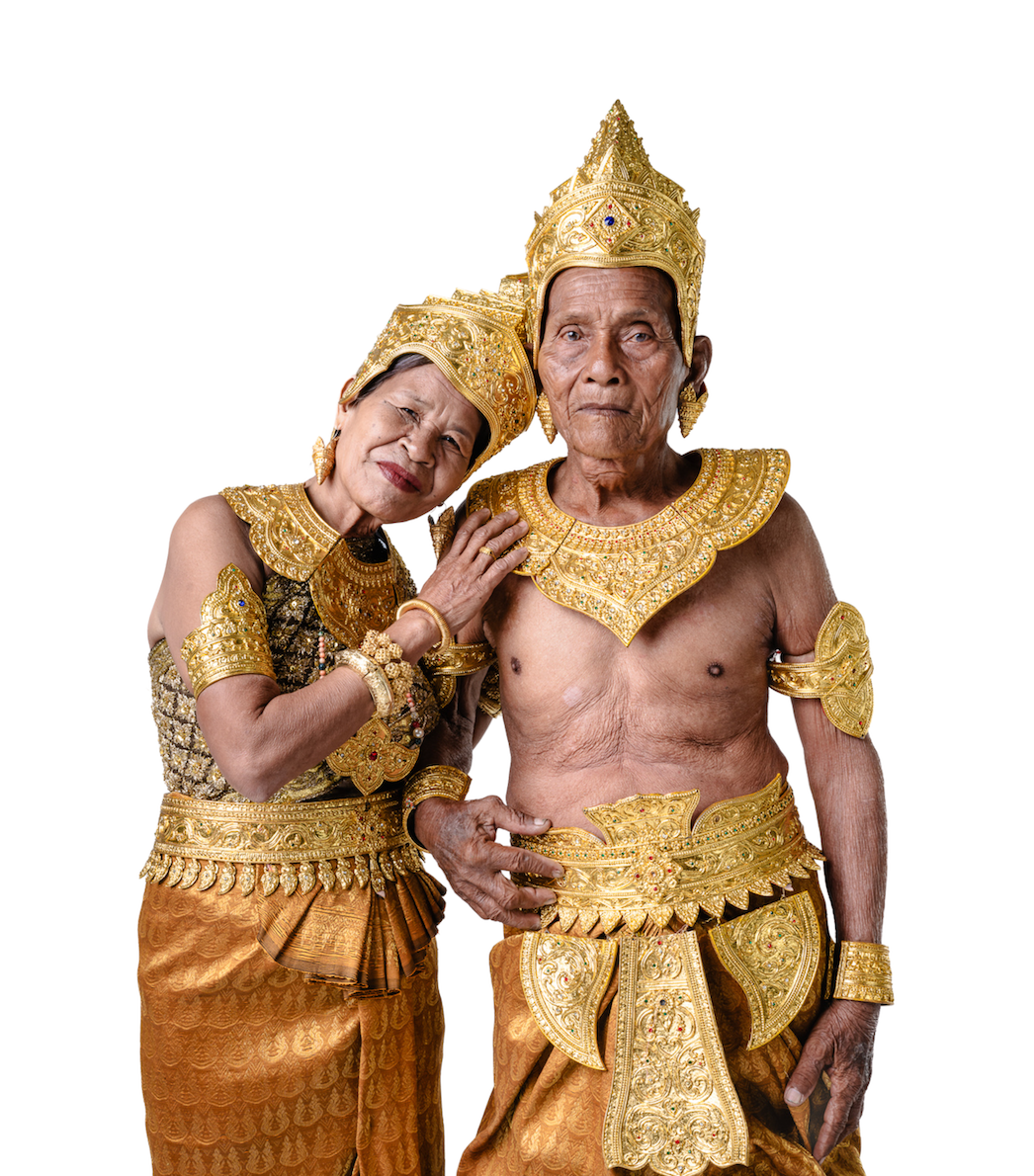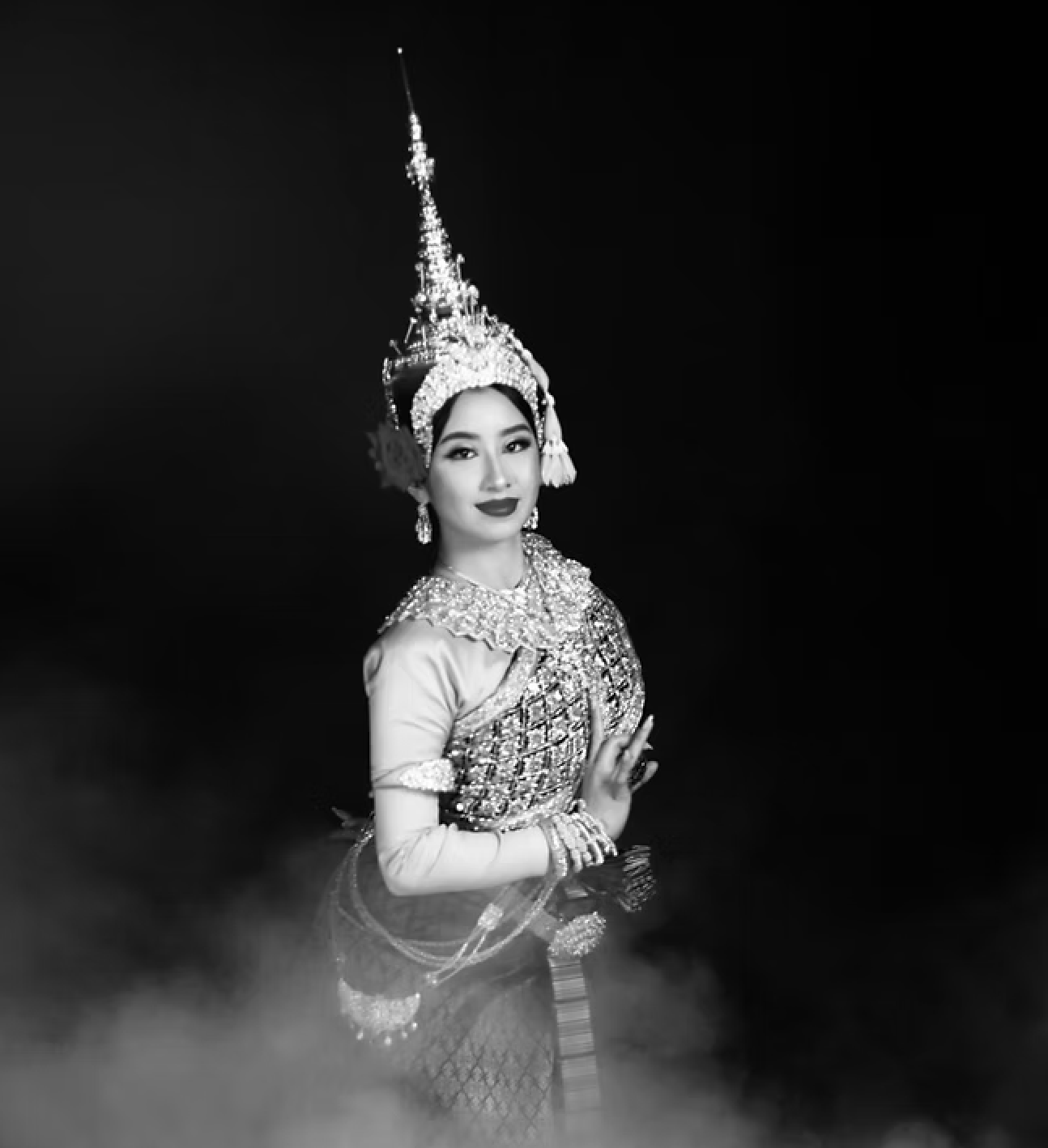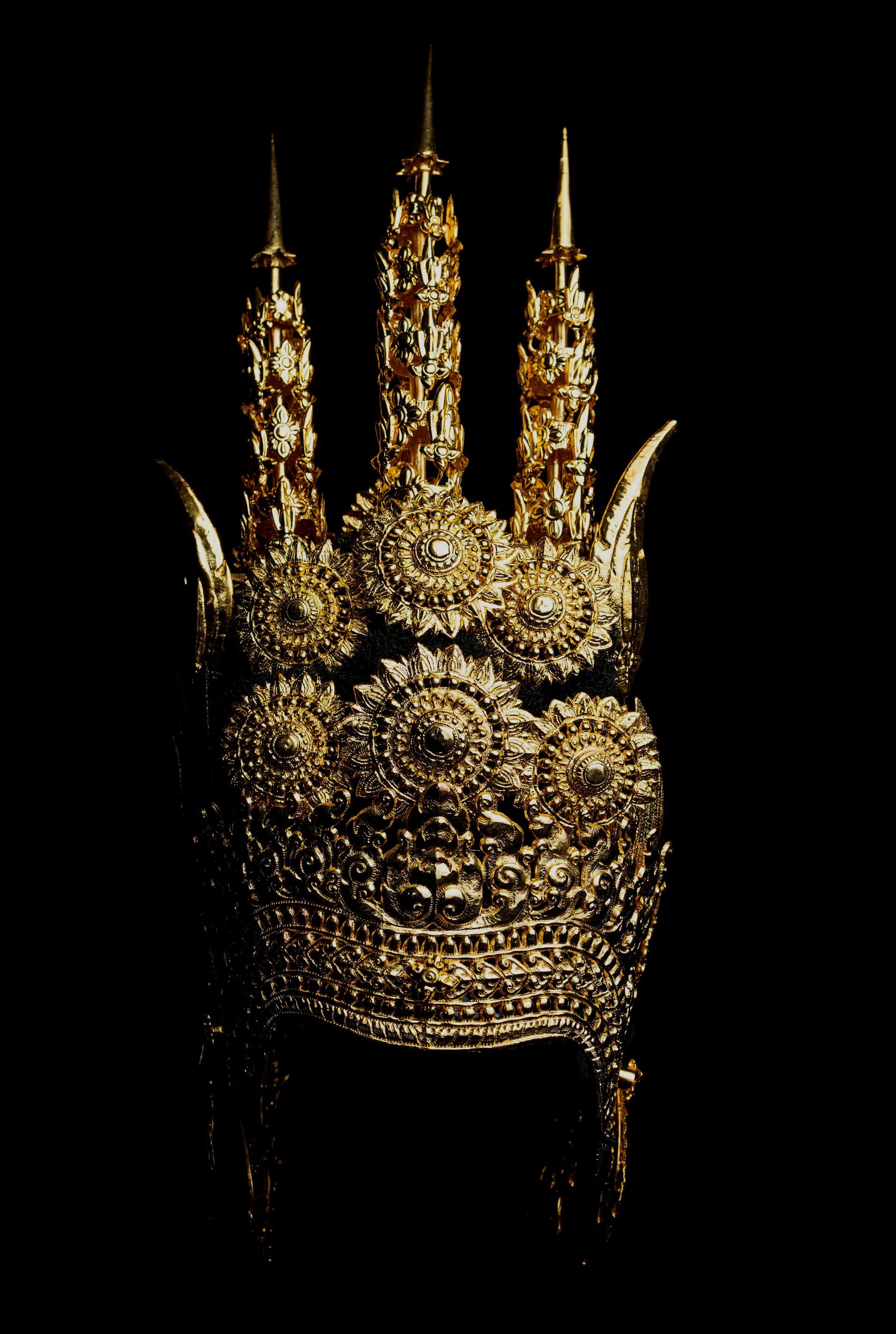When My Soul of Gold was first envisioned, photojournalist Hao Taing imagined a body of work that would honor Cambodia’s elders—the everyday memory-keepers, laborers, and lovers whose presence often goes unseen. As the founder of Apsara Grannies, Hao has long been committed to capturing the raw beauty of daily life in Cambodia. But his work extends beyond image-making—it is a form of humanitarian storytelling, meant to preserve dignity, raise awareness, and restore visibility to those who have been overlooked.
Inspired by the Japanese art of kintsugi—the practice of repairing broken pottery with gold—Hao saw the cracks in Cambodia’s history not as something to conceal, but something to honor. To bring this vision to life, he invited painter Sara Gregor to collaborate. Hao encouraged Sara to consider the idea of metaphorically “filling the cracks” for My Soul of Gold. Together, they reimagined images, asking us to consider where beauty lives, and who we choose to honor.
Wisdom of Gold features portraits of grandmothers, cyclo drivers, and elderly couples—many of whom have lived through poverty, displacement, and invisibility. Dressed in ceremonial gold and traditional adornment, they appear not as subjects, but as sacred figures. The series also includes experimental works such as The Broken Mask—a layered meditation on identity and fragmentation in post-war Cambodian life. In several images, golden cracks and breaks appear—echoes of kintsugi, inviting viewers to witness the process of cultural repair.
Photojournalism, for Hao, is not just about bearing witness—it’s about building connection. His work bridges the gap between visibility and dignity, using storytelling to call attention to lives often overlooked. In a country still shaped by the aftermath of war and inequity, Hao turns his lens toward those living and laboring at the margins: elders on the street, cyclo drivers, vendors, and community caretakers. His images offer not only reverence, but resistance—an act of remembering and a call to see.
Wisdom of Gold offers reverence for those who carry memory in their bones—and reminds us that healing, like gold, belongs in the hands of those who have survived.


